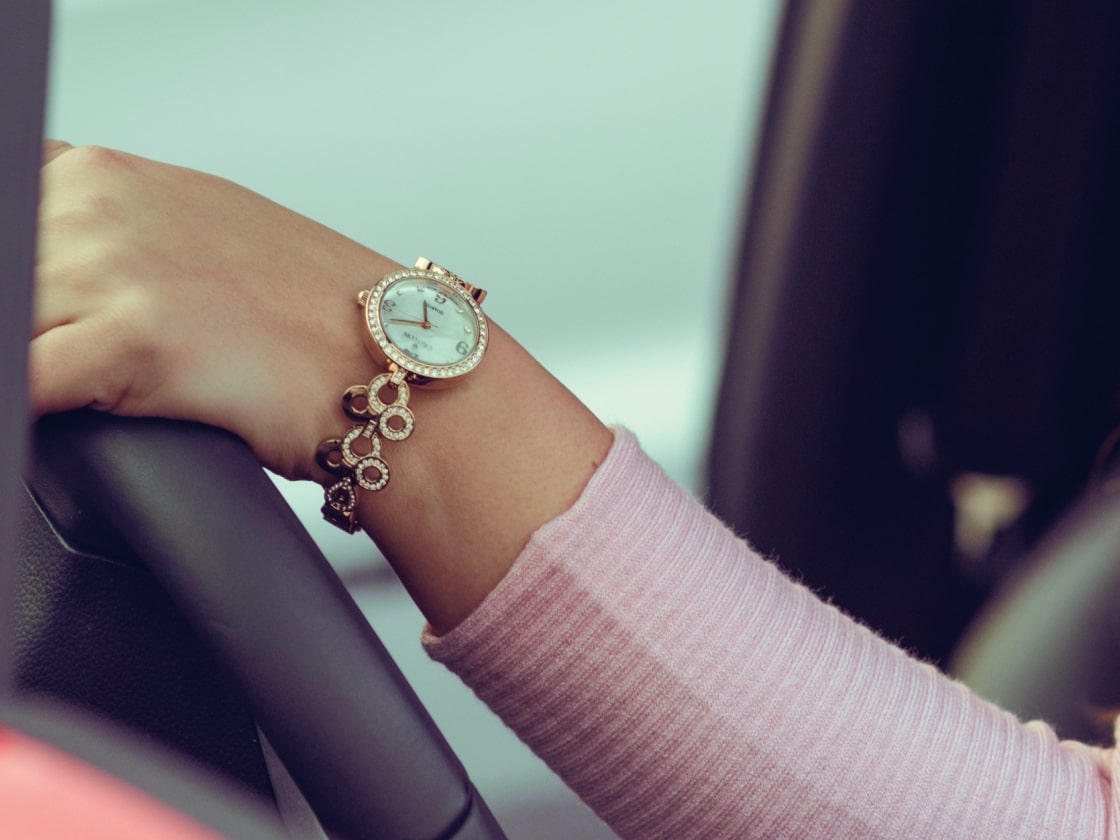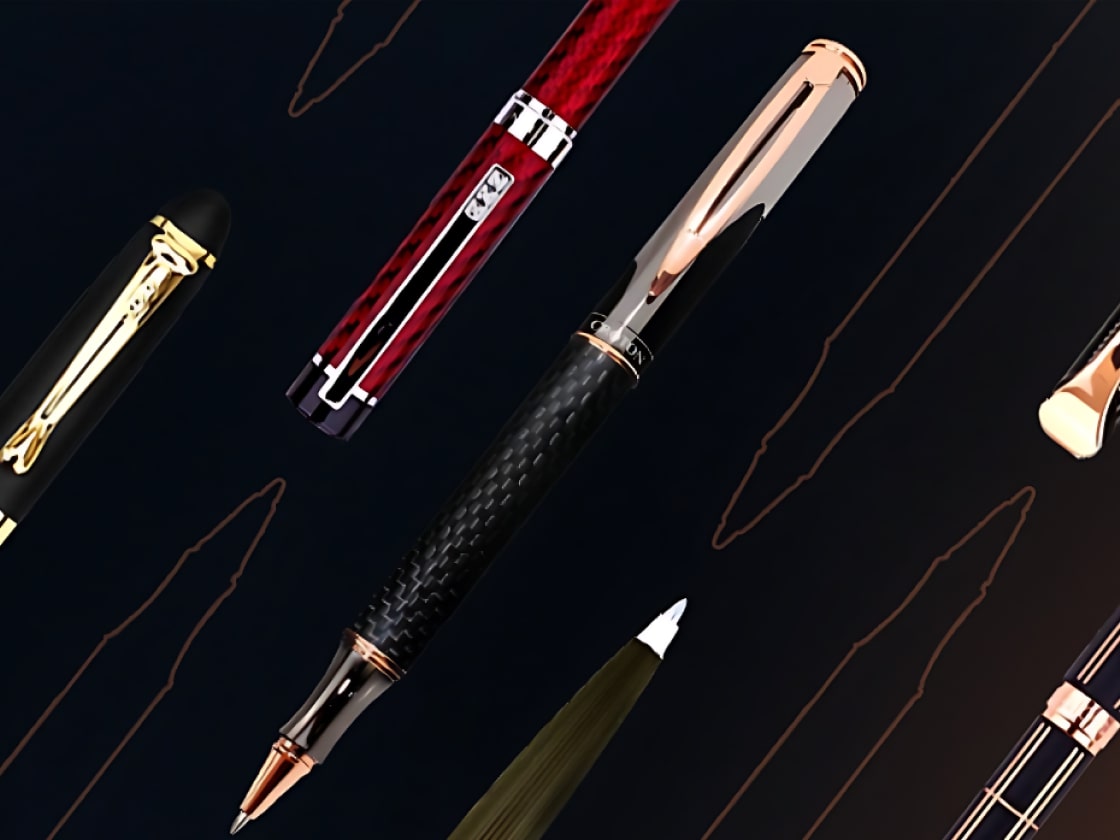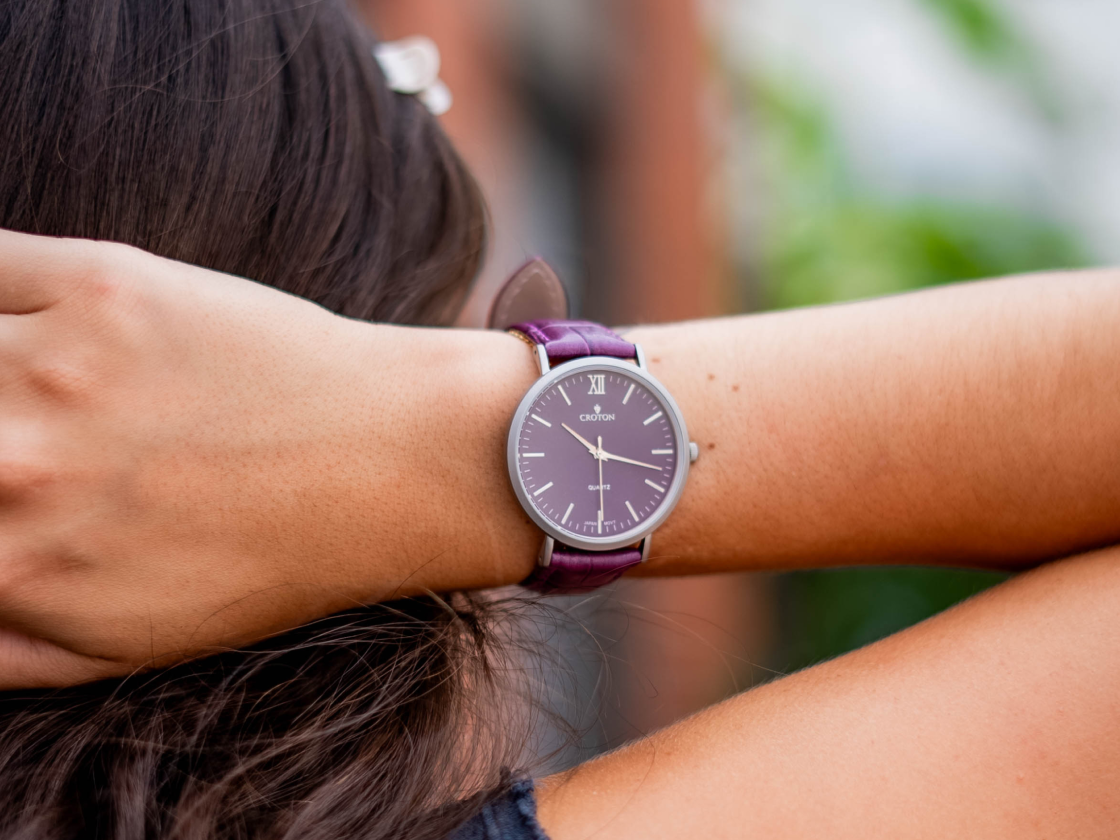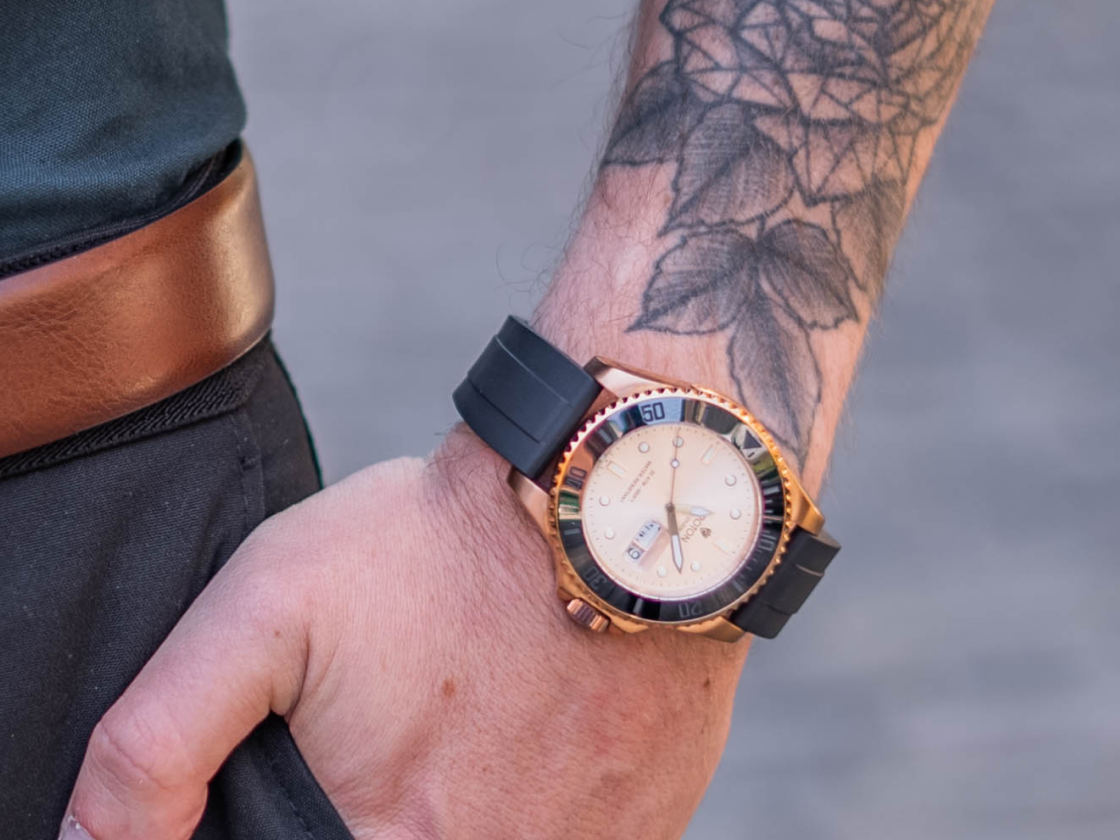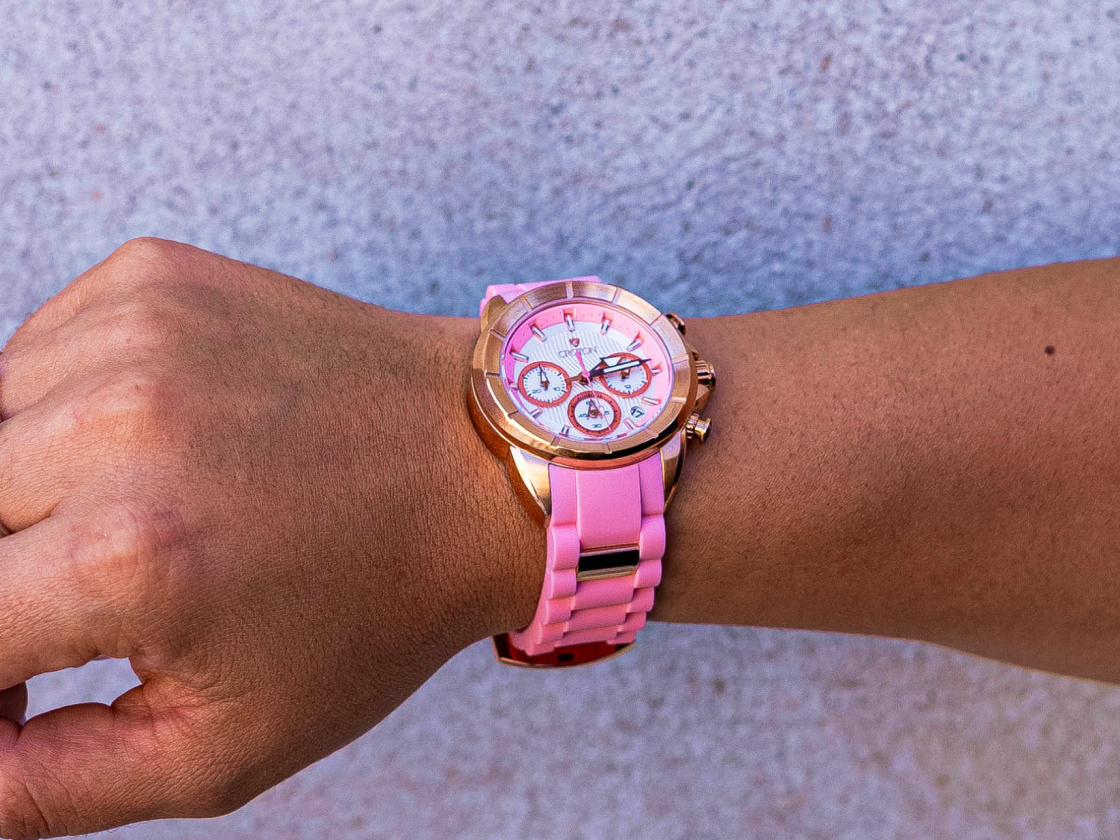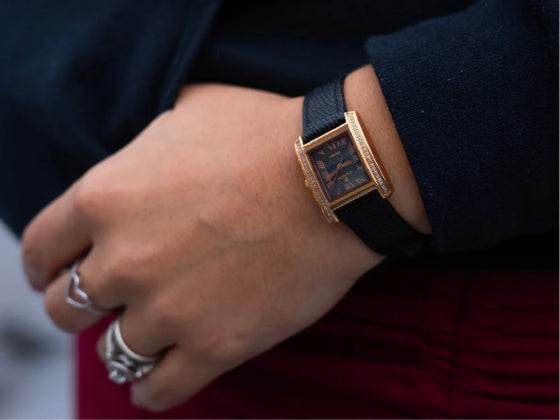A Croton Watch Buyer's Guide to Finding the Perfect Timepiece
A Croton watch is more than a timepiece. It is a fashion statement. Here is a handy guide to understanding the components, features, ,function and design aspects of your Croton Watch.Mechanics of a Croton Watch: The mechanics of the watch are what makes the watch work. All Croton watches are carefully crafted by master watchmakers who draw on their Swiss and Japanese expertise to put together the finest timepieces at affordable prices.
Design Features of a Croton Watch: The design of a watch is going to define the watch. A watch makes a statement. It can be "all business," "out on the town," or "ready to have fun." Here are some common design terms that will give you an idea of the wide array of styles in the Croton line.
Functional Features of a Croton Watch: Q: When is a watch more than a watch? A: When it is timing a race or tracking the sun or moon or keeping time in more than one time zone. Many Croton watches are multi-functional with "complications" that range from simple date windows to complex ways to track time across the world.
What is your watch made of? A watch can be fashioned of many different materials. Both the watch and strap are made of unique materials that give your watch that special "look." The type and measure of its component materials are likely to influence the cost of your timepiece.
A Glossary of Croton Watch Terms:
Adjusted – Term applied to watch movements and some small clock movements to indicate that they have been corrected for various errors, such as isochronism, temperature, and positions.Alarm – A feature on which provides an audible signal at a predetermined time.
Alloy – A mixture of two or more metals.
Amber – Fossilized resin of conifer trees. Colors range from honey through yellow to reddish brown.
Amethyst – Transparent variety of crystallized quartz, typically purple or violet in color.
Aventurine – Translucent greenish quartz mineral, internally granular. Often mistaken for jade, another stone of a green color.
Anadigi display – A display that shows the time both by means of hour and minute hands (an analog display) and by separate digital numbers. Anadigi watches can also combine analog and digital features to include other features like stopwatches, dates and chronographs.
Analog display – A display that shows the time by means of hands and a dial.
Applied figures – figures or index which have been attached to the dial.
Arabic numbers – Figures on a dial, such as 1, 2, 3, as opposed to Roman numerals, such as I, II, V, IX
Art Deco – See Deco Style – A style of design between 1910-1935, most importantly influenced by cubist geometry.
Atmospheric Pressure (ATM’s) – Each ATM equals 33 feet of water pressure done in a static state.
Austrian crystal – Imitation of natural or rock crystal (quartz). See also CRYSTAL.
Automatic self winding movement – wrist watch that will wind itself by use of the swinging rotor. If worn by a normally active person for four hours, it will remain running for 30 hours.
Automatic repeat countdown timer – A countdown timer (see “countdown timer”) that resets as soon as the pre-set time has elapsed and starts the countdown again. It repeats the countdown continuously until the wearer pushes the stop button.
Baguette – Small rectangular stones which are shaped and faceted. Often used as accents to another stone. The term can also apply to the shape of watch cases.
Balance spring – A very fine spring (also called a “hair spring”) in a mechanical watch that returns the balance wheel back to a neutral position.
Balance wheel - The part of a mechanical watch movement that oscillates, dividing time into equal segments.
Bangle – A stiff bracelet that slips over the hand or is hinged.
Bezel – The ring on top of the watch case.
Bi-directional rotating bezel – a bezel that can be moved either clockwise or counterclockwise. These are used for mathematical calculations or for keeping track of elapsed time.
Brass – High quality metal for cases and bracelets. Brass holds finishing well.
Built – in illumination – Lighting on a watch dial that allows the wearer to read the time in the dark.
Cabochon – A domed gemstone. Highly polished curved surface without faceting found on a watch crown.
Calendar – A feature that shows the day of the month, and often the day of the week and the year.
Carat – Unit of weight for gemstones with 100 points to a carat, with one carat equaling one-fifth of a gram.
Carbon Fiber – Carbon filaments used with a resin, in a technology similar to fiberglass.
Carnelian – Pale red quartz. Once believed to benefit the wearer’s health and love life. Most carnelian comes from Brazil, India, Siberia, and Germany.
Case – The box-like component that holds that watch movement (inner mechanism of a watch).
Ceramic – A non-metallic material made from clay and hardened by firing at a high temperature. Can be used in watch dials or bracelet.
Chalcedony – Refers to various types of colored quartz, usually those with a milky appearance like carnelian, agate, cat’s eye, and jasper.
Chevron style – A motif consisting of short lines joining at angles to form an inverted “V”.
Chronograph – A mechanical watch with hour and minute hand and a center sweep-second hand which can be controlled by one or more special buttons in the side of the case or through the crown. The sweep-second hand may be started, stopped, and made to return to zero with
Chronometer – A mechanical watch which has passed rigorous testing for time keeping in different positions and temperatures in a Swiss laboratory. Individually numbered and accompanied by a certificate. However, because of the split-second accuracy of fine quartz watches (much more accurate than mechanical chronometer rated watches) the chronometer rating is no longer a major factor.
Citrine – A brownish-orange quartz variety.
Clasp – a fastener that holds the two ends of the watchband together. Different types of clasps include:
Compass – Navigational instrument for finding directions.
Countdown timer – A function that lets the wearer keep track of how a pre-set period of time has elapsed. Some countdown timers sound a warning signal a few seconds before the time runs out – these are useful in events such a yacht races, where the sailor must maneuver th
Crown – The ridged knob on the outside of a watch which is used to set or wind the watch. A piece fastened to the stem for winding the watch. (Slang term: winding knob or button). The crown can operate with a “screw-down” or “pusher” motion.
Crystal – A top-quality colorless, transparent glass resembling natural or rock crystal. About 200 kinds associated with jewelry. Made through an ancient process that involves lead oxide. See also AUSTRIAN CRYSTAL.
Crystals – –
1) ACRYLIC (Plexiglas or plastic) Very strong but easily scratched.
2) MINERAL: Processed as a special type of glass, these are far harder and more scratch resistant.
3) SAPPHIRE: This is the strongest and most scratch resistant. It is also almost non-reflective.
4) SAPPHIRE COATED/HARDENED – K1 – Mineral crystal with sapphire coating.
Cubic Zirconia (C.Z.) – A synthetic gem used in jewelry to imitate diamonds.
Curb link – A type of chain with links that are oval and twisted so they lie flat.
Date Magnifier – A magnifier in the glass over the date to facilitate easy reading.
Day/Night Indicator – A colored or shaded band on a world time dial(see “world time dial”) that shows which time zones are in daylight and which in darkness.
Day/Date – A window displaying the day of the week and the month.
Deco style – Derived from the style of Art Deco, which originated in France in the 1920’s and 1930’s. Typified by abstract designs and linear, geometric patterns.
Detent – The screw holding the setting lever in a watch movement. Also called a detainer or pawl.
Dial – The watch face.
Diamond – A hard form of crystalline carbon with refractive qualities that is used as a precious gemstone.
Diamond dial – Dial set with diamonds for markers, numerals, etc.
Digital Watch – A watch that shows the time using LCD or LED numerals rather than through a dial and hands (analog) display.
Divers watch – This watch is water-resistant to a depth specified by the manufacturer, generally 330 feet or more. To protect the movement, the diver’s watch has a “screw-down” crown, generally similar to that of a hatch on a submarine. The hands and dials markers are p
Ebauche – A term used by Swiss watch manufacturers to denote the unassembled raw movements without jewels, escapement, plating, engraving. The manufacturers supply their ebauches to trade name importers in the U.S.A and other countries who have them finished, jewel
Elapsed time rotating bezel – A graduated rotating bezel used to keep track of periods of time. The bezel can be turned so the wearer can align the zero on the bezel with the watch’s second or minutes hand. He can then read the elapsed time off the bezel.
Electroplating – The process of covering a base metal with a film of gold. The base metal is set in a chemical solution through which an electrical current flows to coat it with the precious metal.
Embossed – A mechanical process, done under considerable heat and pressure, which permanently imprints a variety of unique effects into leather and metal surfaces.
Enamel – colored, opaque glassy material fused onto metal, pottery or glass.
Escapement – Device in a mechanical movement that controls the rotation of the wheels and thus the motion of the hands.
Exhibition Back – Crystal on back enables the wearer to see the movement of the watch.
Exotic Leathers – Non-endangered animal, bird and fish skins used for watch straps. May include ostrich, lizard, crocodile, python, beaver tail, cobra, eel, shark, buffalo, stingray, alligator and more.
Extender chain – A chain which may be attached to another in order to provide a longer length.
Facet – A polished surface; a small plane which is cut into a surface and enhances its reflection of light.
Faux – An imitation of a valuable gem or leather; used to describe imitation strap materials or stones found in fashion jewelry.
Filigree – Lace-like ornamental work made from intricately arranged, intertwined wire.
Finish – The way the surface of a piece is polished or textured. Includes gold, rose, platinum, rhodium, two-tone, stainless steel and others.
Fluted – A surface ornamented by channels or grooves.
Galuchet – Also known as stingray, a marine animal that is used to make textured straps.
Garnet – A family of crystals whose name is derived from their resemblance to red pomegranate seeds. A semi-precious stone, usually a reddish-brown color; can range from true red violet to burnished red. Often semi-opaque.
Gem – A stone which has been cut and polished for use in jewelry and fulfills the requirements of beauty, durability, and rarity. A fine stone of unusual quality. Precious stone.
Gold – a heavy, yellow, metallic element used for coins and jewelry since prehistoric time.
Golds – –
1) 10 karat – 10 karat (10k) gold is 10 parts of gold to 14 parts other metal. (10K gold watches will have a mark reading .417 on the back).
2) 14 karat - 14 karat (14k) gold is 14 parts of gold to 10 parts other metal. (14K gold watches will have a mark reading .585 on the back).
3) 18 karat - 18 karat (18k) gold is 18 parts of gold to 6 parts other metals. (18K gold watches will have a mark reading .750 on the back).
4) Pure 24K gold is yellow in color. It is very soft and not acceptable for use in articles subject to wear unless alloyed with harder metal. The choice of alloy metals determines the color of the gold.
5) Rose gold – an alloy of gold and copper.
6) White gold – an alloy of gold, nickel, copper, and zinc.
7) 24 karat yellow gold alloyed with nickel to make 14 or 18 karat white gold
8) Yellow gold – the most popular gold alloy, an alloy of gold, silver, copper, and sometimes zinc.
Gold finish – Jewelry done in a finish so that it has the look of gold.
Gold-plating – Used on better watches to varying degrees of micron thickness, applied to base metal, nickel, silver or stainless steel, ranging from light to thicker layers.
Gear train – The systems of gears which transmit power from the mainspring to the escapement.
Hand-winding movement – the mechanism of a stem-wound (wind up) movement is its mainspring. As the watch is wound, the mainspring is compressed. As the mainspring unwinds, it generates the power which makes the watch run. A watch employing a mainspring (mechanical watch) should be wound once a day, preferably at the same time each day. Source of power is a spring wound by stem. Transmission is gear train. Time indication is hands (analog display
High polish – A surface which is polished to a mirror-like finish.
Illumination – A “glow-in-the-dark” effect often found on the hands or markers of a watch for easy night reading.
IPS – Ionic Polymer System – A system used to help plating adhere.
IPG – Ionic Polymer Gels – Used as an auxiliary to help plating adhere.
Index – An hour indicator on an analog watch dial, used instead of a numeral.
Integrated bracelet – A watch bracelet that is incorporated into the design of the case
Inlay – A decorative element, such as a stone, which is imbedded into another surface so it is flush (or level) with it.
Jade – An ornamental gemstone, typically greenish in color.
Jasper – A semi-opaque to opaque rose quartz. Usually yellowish, reddish, or brown. The U.S. and Brazil are the most common sources. Jasper was once believed to have curative powers.
Jewels – Synthetic sapphires or rubies that act as bearings for gears in a mechanical watch, reducing friction.
Karat – A measure, from 1 to 24, used to indicate how much of a piece of jewelry is gold content and how much is alloy.
Liquid crystal display (LCD) – A digital watch display that shows the time electronically by means of a liquid held in a thin layer between two transparent plates. All LCD watches have quartz movements.
Lap timer – A chronograph function that lets the wearer time segments of a race. At the end of a lap, he stops the timer, which then returns to zero to begin timing the next lap.
Lapis lazuli – A semi-precious stone azure blue in color.
Lugs – Projections on a watch case to which the watch band or bracelet is attached.
Luminous – Giving off light; glows in the dark.
Mainspring – The flat, ribbon-like tempered steel spring wound inside the barrel and used to drive the train wheels.
Marcasite – Crystallized iron pyrites (fool’s gold”) mounted in groups, cut or uncut, in pins and other pieces of jewelry. Marcasite is a gray, lustrous mineral.
Marquise – An oval shaped gemstone cut with pointed ends. It’s named for the Marquise de Pompadour, Mistress of King Luis XV.
Matte – A frosted, non-shiny surface--dull or flat finish.
Mechanical movement – A movement powered by a mainspring. Working in conjunction with a balance wheel (as opposed to a battery and quartz crystal, as in a quartz movement).
Mesh – A chain which is fabric-like and woven of fine wire.
Metallic – A shiny, lustrous appearance.
Micron – Unit of measuring the thickness of applied gold.
Mineral crystal – See QUARTZ
Moon-phase – A window in a watch face that shows which phase the moon is in. A disk beneath the window, painted with pictures of a moon, rotates as the month progresses, revealing gradually larger or smaller segments of the picture.
Mother – of – pearl – Hard, iridescent substance that forms on the inside layer of a pearl-bearing mollusk.
Movement – The inner mechanism of a watch that keeps time and moves the watch’s hands, calendar, etc. Movements are either mechanical or quartz.
Nickel silver – An alloy of nickel, copper, and zinc: usually 65%copper, 5-25% nickel, and 10-30% zinc, containing no silver.
Onyx – A semi-precious stone composed of chalcedony (a variety of quartz) found naturally in white or gray. The white variety is generally dyed black for onyx.
PVD – Physical Vapor Deposition – surface treatment applied to metal to enable plating to adhere.
Panther link – A flat chain in which solid links are arrange like bricks.
Patent leather – A highly glossy finished leather
Pave/Pave setting – A style of setting stones where a number of small stones are set as close together as possible to completely cover the surface.
Pearl – A smooth, round enlargement formed within the shell of a mollusk due to an irritant and used as a gem.
Pendent – An ornament suspended from a single chain.
Pennyweight (DWT) – A unit in troy weight equal to 0.05 troy ounce (1/20th of an ounce)
Perpetual calendar – A calendar (see “calendar) that automatically adjusts for the months’ varying lengths and for leap years.
Platinum – One of the rarest precious metals, platinum is also one of the strongest and heaviest, making it a popular choice for setting gemstone jewelry and watches.
Point – Unit of weight for gemstones equal to one-hundredth of a carat.
Polish – Process used to make metal smooth and glossy. Increases shine and eliminate flaws.
Power reserve indicator – A feature of a mechanical watch that shows how much longer the watch will operate before it must be wound. A battery reserve indicator on a quartz watch informs the wearer when the battery is low. Often this is indicated by the seconds hand moving at two
Quartz – A crystalline mineral used for gems, usually colorless and transparent.
Quartz analog – An analog is simply a description of time told with a minute and hour hand. Most watches are quartz powered, which provides split-second accuracy. The quartz used is a man-made substance chemically identical to rock crystal. This is purer than natural crystal, offering better performance. Croton quartz movements are accurate within 30 seconds per year. A crystal is vibrated by an electric current from a battery. Impulse per second is fed into a tiny motor, which is transmitted to a gear train, turning the hands.
Quartz crystal digital – LCD is liquid crystal display. The LCD system displays time constantly on a permanent screen.
Quartz movement – An electronic movement in a watch powered by a battery that causes vibrations in a tiny piece of quartz.
Repeater – A device that chimes the time when the wearer pushes a button.Some repeaters, called “quarter repeaters” sound just the hours and quarter hours (by means of two different pitched tones); others, called “five-minute repeaters,” sound the hours, quarter, an
Rhinestone – Real rhinestones are cut from rock crystal. Today, most rhinestones that are used in jewelry are made of glass which has the look of natural stone.
Rhodium – A metal that is part of the platinum family. Silver, gold, and even base metals were often Rhodium plated during the 30’s and 40’s to give them the white, shiny look associated with platinum.
Ribbed – A textured effect consisting of ridges.
Roman Numerals – The style of numerals used by the Romans, made up of letters I, V, X, L, C, D, and M.
Rope chain – Chain with a spiral appearance, giving the effect of two thick strands woven together.
Rotating bezel – A bezel (the ring surrounding the watch face) that can be turned. Different types of rotating bezels perform different time keeping and mathematical functions (see “elapsed time rotating bezel,” “uni-directional rotating bezel,” “bi-directional rotating b
Rotor – The part of an automatic, or self-winding, watch that winds the movement’s mainspring. It is a flat piece of metal, usually shaped like a semicircle that swivels on a pivot with the motion of the wearer’s arm.
Sapphire crystal (Synthetic Sapphire Crystal) – Extremely hard material used for watch crystals.
Shock resistant – A watch qualifies as “shock resistant” if it can be dropped 40 inches to a hardwood surface. This drop must not stop or damage the watch.
Silver finish – Jewelry done in a finish so that it has the look of silver.
Silvertone – Jewelry with the look of silver.
Skeleton case – A case with a full or partial transparent front and/or back that allows the wearer to view the watch’s movement.
Snake chain – A type of chain with links that fit together to form a bendable, often tubular chain.
Solar powered batteries – Batteries in a quartz watch that are recharged via solar panels on the watch face.
Sodalite – A mineral which is a component of lapis and generally translucent, usually blue in color.
Square cut – A style in which the stone is square and bordered by four long narrow facets that are step cut. Similar to emerald cut.
Subsidiary seconds – Small dial, usually opposite the winding crown on a chronograph and at the 6th hour position on a time only watch, that indicates the seconds and makes one revolution per minute.
Stainless steel – Steel containing chromium and resistant to rust and corrosion.
Stem – The piece that is in between the movement and the crown.
Step cut - A gem cut with a varying number of sloping parallel rows of four-sided facets which give the impression of steps.
Stepping motor – The part of a quartz movement that moves the gear train which in turn moves the watch’s hands.
Sterling Silver – The standard of purity of fineness of English silver is 925 parts pure silver to 75 parts alloy. (Sterling silver watches will have a mark reading .925 on the back).
Stopwatch – A simple form of chronograph with controlled starting and stopping of the hands; sometimes also stopping the balance wheel. A timer in pocket watch form.
Subdial – A small dial on a watch face used for any of several purposes, such as keeping track of elapsed minutes or hours on a chronograph or indicating the date.
Tachymeter – (“Tack IM eh ter”) Probably the most common additional feature on chronograph watches, a tachymeter (also called a “tachometer”) is a dial that enables the wearer to use the watch to compute distance, speed and other measurements.
Tennis bracelet – A flexible bracelet made up of evenly matched stones, commonly diamonds. There are variations on the style, such as alternating stones.
Textures – The feel or patterned appearance of a surface. Both straps and dials can have textured surfaces.
Tiger’s eye – The name given to a gem which when cabochon cut shows a single light streak across its face. A semi-precious variety of quartz found in South Africa, it may be yellowish-brown, bluish, or red in color.
Timepiece – Anything that keeps time.
Titanium – A metal that is used for some watch cases and bracelets. Titanium is much stronger and lighter than stainless steel. Titanium is also hypo-allergenic.
Toggle clasp - A fastener consisting of a ring on one end of a chain and a short bar on the other end. The bar is slid through the ring and sits across it so it does not slide or pull.
Topaz – A transparent gem, the most precious type is wine-yellow in color. It also may be found in other colors, such as white, blue, brown, orange, and pink.
Tourbillion – (“Tur bee ohn”): a device in a mechanical watch that eliminates timekeeping errors caused by the slight difference in the rates at which a watch runs in the horizontal and vertical positions. The tourbillion consists of a round carriage, or cage, holding
Turquoise – A semi-precious stone which is greenish-blue in color.
Two-tone – Two colors of metal in the case or bracelet finish.
Unidirectional Bezel – Bezel that turns only one way – counterclockwise.
Water resistant – Able to withstand splashes of water from rain or a shower. Higher degrees of resistance indicated by phrases such as “water resistant” to 100 meters.”
Winding stem – The button on the right side of the watch case used to wind the mainspring. Also called a “crown.”


